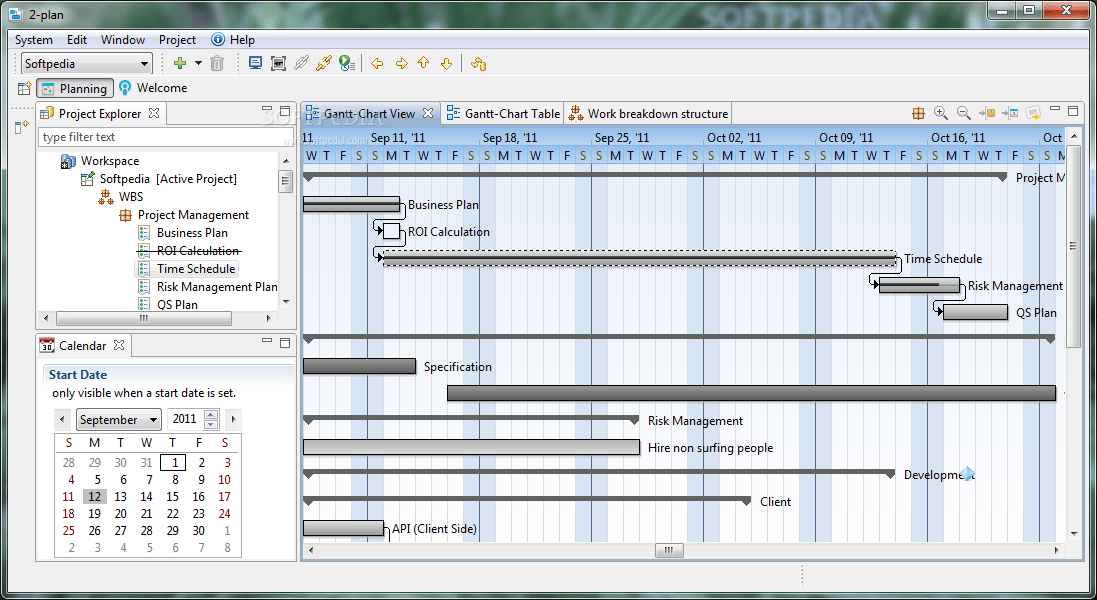

PROJECT PLANNER SOFTWARE SOFTWARE
Working software over comprehensive documentation.Individuals and interactions over processes and tools.The Manifesto for Agile Software Development Agile software development values īased on their combined experience of developing software and helping others do that, the authors of the manifesto declared that they valued: In 2011, the Agile Alliance created the Guide to Agile Practices (renamed the Agile Glossary in 2016), an evolving open-source compendium of the working definitions of agile practices, terms, and elements, along with interpretations and experience guidelines from the worldwide community of agile practitioners.


PROJECT PLANNER SOFTWARE PROFESSIONAL
In 2009, a group working with Martin wrote an extension of software development principles, the Software Craftsmanship Manifesto, to guide agile software development according to professional conduct and mastery. In 2005, a group headed by Cockburn and Highsmith wrote an addendum of project management principles, the PM Declaration of Interdependence, to guide software project management according to agile software development methods.

Together they published the Manifesto for Agile Software Development. Martin ( SOLID), Mike Beedle (Scrum), Arie van Bennekum, Martin Fowler (OOAD and UML), James Grenning, Andrew Hunt (PragProg, Ruby), Ron Jeffries (Extreme Programming), Jon Kern, Brian Marick (Ruby, TDD), and Steve Mellor (OOA). They were: Kent Beck (Extreme Programming), Ward Cunningham (Extreme Programming), Dave Thomas ( PragProg, Ruby), Jeff Sutherland (Scrum), Ken Schwaber (Scrum), Jim Highsmith (Adaptive Software Development), Alistair Cockburn (Crystal), Robert C. In 2001, seventeen software developers met at a resort in Snowbird, Utah to discuss lightweight development methods. Īlready since 1991 similar changes had been underway in manufacturing and management thinking derived from Lean management. Although these all originated before the publication of the Agile Manifesto, they are now collectively referred to as agile software development methods. These lightweight methods included: rapid application development (RAD), from 1991 the unified process (UP) and dynamic systems development method (DSDM), both from 1994 Scrum, from 1995 Crystal Clear and extreme programming (XP), both from 1996 and feature-driven development (FDD), from 1997. ĭuring the 1990s, a number of lightweight software development methods evolved in reaction to the prevailing heavyweight methods (often referred to collectively as waterfall) that critics described as overly regulated, planned, and micromanaged. Iterative and incremental software development methods can be traced back as early as 1957, with evolutionary project management and adaptive software development emerging in the early 1970s. 8.1 Applications outside software development.7.2.14 Fixed time, resources, scope, and quality.7.2.13 Attempting to take on too much in an iteration.7.2.12 Allowing technical debt to build up.7.2.8 Problem-solving in the daily standup.7.2.5 Product owner role is not properly filled.7.2.2 Adding stories to an iteration in progress.7.2 Common agile software development pitfalls.6.3 Large-scale, offshore and distributed.6.1 Agile software development practices.4.3 Very short feedback loop and adaptation cycle.4.2 Efficient and face-to-face communication.4.1 Iterative, incremental, and evolutionary.3 Agile software development principles.2 The Manifesto for Agile Software Development.


 0 kommentar(er)
0 kommentar(er)
